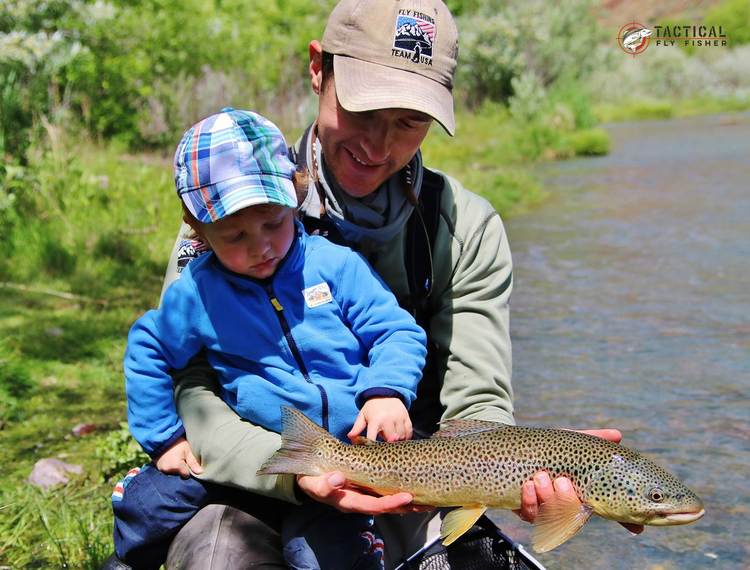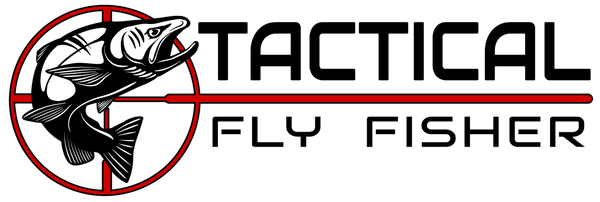
BATTLING THE WIND WITH A EURO-DRY-DROPPER HYBRID RIG
Share
If there is one weather factor that has dominated the spring fishing season for me in my travels, it has been the dreaded “W”. That’s right, the type of weather that we anglers often don’t dare mention for fear that we might worsen the conditions from calm to breezy or breezy to gale. Sometimes you can simply avoid the wind by choosing sections of river that are perpendicular to its path as long as there is riparian vegetation that blocks it. Other times you can drive along sections of a river where canyon walls seem to funnel the wind in some places and create dead spots in others. That was the situation on a river I fished last Saturday. However, as often as not, if it’s a windy day you need to learn how to adapt to it because fleeing the wind just isn’t an option.
Unfortunately, though I feel it is the most reliable fish catching technique on many rivers, Euro-nymphing’s Achilles heel happens to be wind. Leader material held off the water is a great kite. In a good blow, if you are tight lining a Euro-rig, your leader will be at the mercy of the breeze. This makes getting a smooth dead drift and detecting strikes more than a little challenging. Typically you can combat wind by fishing heavier flies and lowering your rod during the drift to minimize the surface area of the leader exposed to the wind. However, this becomes less effective in low gradient slower water where fish have time to critique your drifts more carefully. This can be compounded even further in rivers, such as tailwaters, where fish become tuned into smaller insects and convincing them to eat a larger heavier fly is less likely. Previously I have preached the cons of suspension nymphing because the indicator/dry fly forms a surface anchor. This surface anchor is normally a hindrance because the current speeds between your suspension device and your nymphs with differ both laterally and/or vertically which leads to slack, loss of strike detection, and drag (see this article). However, during windy weather, a normally adverse surface anchoring suspension device helps resist the drift killing effects of wind. Those effects are generally more adverse than differential currents if an angler can manipulate his/her flies to be in the same current seam laterally (see the article above again and also this article from troutbitten.com).
Let me illustrate my above thesis with an experience I had the weekend before I left for the National Fly Fishing Championships back in May. I was fishing a well-known tailwater with my family. Much of the water on this river is fairly flat and fish often sit in deeper slower water until hatches inspire them to invade the rarer faster and shallower water. The slower deep water allowed the resident brown trout to get a long look at my nymphs and they generally preferred smaller midge and baetis imitations unless there were larger insects hatching, although a squirmy worm found quite a few participants. The combination of slower deeper water and the necessity for small flies only heightened the negative effects of the constant wind which greeted me that weekend on my Euro-nymphing drifts. After some fairly fruitless effort I decided to switch to a dry dropper to anchor my rig against the wind and help me achieve better drifts. After switching, I fished back through water I had previously only caught one fish from. I ended up catching half a dozen more on the same nymphs (a pheasant tail and a peacock butano perdigon nymph) I had been fishing before attaching the dry fly. I spent most of the rest of the weekend fishing this same rig with good success. When I fished complex pocketwater and/or had rare breaks in the wind, I simply chopped the dry fly off and fished the rig as a Euro-nymph rig. If flatter water or wind returned I was able to quickly attach the dry fly again and continue catching fish until a hatch came off and it was time to chuck dries to rising fish.

Can I touch it?


So how do I build this capability into my rig you say? It’s pretty simple. I add 12” of 3x to my sighter on a Tactical Fly Fisher Thin Euro-nymphing leader before tying on a 1.5 mm tippet ring. Then I add a 6” 4x dropper tag either to the tippet ring or just above it by sliding a uni-knot with a long tag down into the tippet ring. The dropper tag is where the dry fly is attached. This setup is illustrated below. Once you have this rig ready, try sidearm casts to help cut casts into the wind easier. You may also need to use reach casts to align your dry fly and nymphs in the same lateral current seam. If the wind isn’t too bad, you may be able to high stick your leader off of the water to get a smooth dead drift. Otherwise, you’ll need to mend your leader. I typically use a bushy caddis dry (sizes 10-14) with this rig as it often gets eaten while simultaneously providing subsurface strike detection but you could also tie some micro poly yarn indicators and place them above the tippet ring if you prefer.

While I wish all of you calm future outings on the river, eventually you’ll have some wind to battle. I hope that by using the techniques described above, you can combine the pros of both the Euro-nymphing leader and dry fly and use them to your advantage when the wind refuses to leave you behind.
Happy Fishing,
Devin
